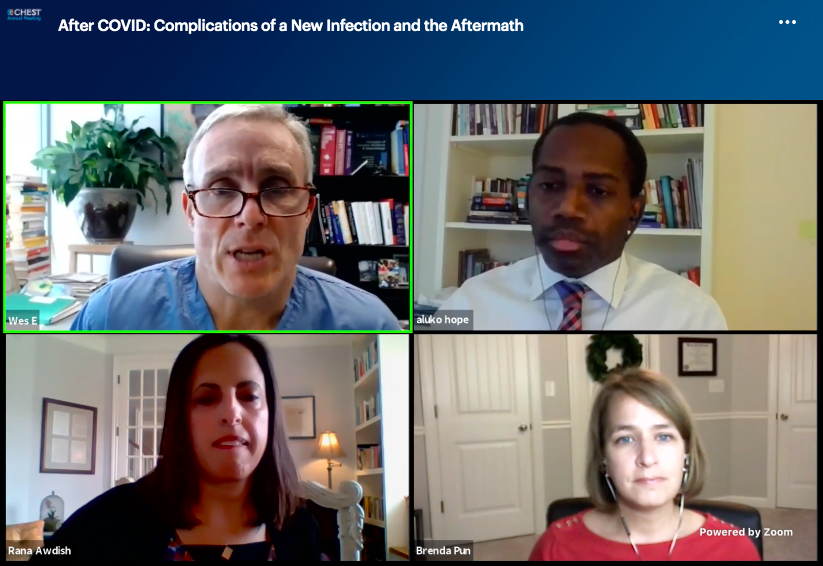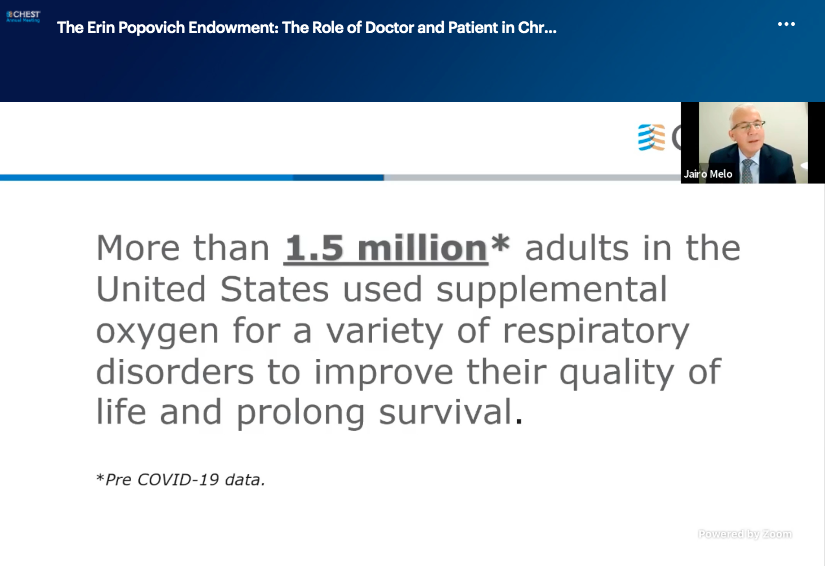
Coming up soon! When the theoretical becomes real: lessons from a pandemic. #CHEST2020 @Dev_Sanghavi @jessica_bunin 

Dr. Michal Sobieszcyk: Critical Care in a Pandemic: Fundamentals of Disaster Preparation. A diasster is when local services become overwhelmed. #CHEST2020 

Sobieszcyk: Pandemics are unique because they are slow-moving disasters. Challenges are the surge can last for weeks-months and resource utilization. Goal is to avoid crisis care as long as possible! #CHEST2020 

My personal aside? This sounds great. But for profit healthcare systems are disincentivized to work together like the military model. (/end rant) #CHEST2020 

Back to Dr Sobieszcyk: Requires regional pre-planning for pop-off space, equipment, supply chain, staff. Transition to crisis care should be avoided as much as possible. #CHEST2020 

@jessica_bunin: Lesson 1. Identifying space is not enough. Need to develop concrete plan and test it. #CHEST2020 

@jessica_bunin: Lesson 2 & 3. Create Flexible Tiered Plans and Build Teams with these Plans. #CHEST2020 

@jessica_bunin: Lesson 4. You don't need to reinvent the wheel. High quality critical care is high quality critical care. #CHEST2020
@jessica_bunin: Lesson 5. It is essential to take care of your team. Do not underestimate small displays of gratitude. #CHEST2020 

Dr. David Ferraro: Chronological waves of shortages of equipment and medication shortages. How do we manage these shortages and deviations from usual practices? #CHEST2020
Ferraro: COVID is exacerbating already stressed systems. Shortages in sedation, analgesia and paralytics have been widespread. Vasopressors and antimicrobials at risk. #CHEST2020 

Ferraro: Hoarding, rumors and fears impact supply chain and deplete just-in-time inventories. #CHEST2020 



Ferraro: Alternative medications have risks. May benefit from anesthesiology consults to help develop alternative protocols. #CHEST2020
Ferraro: We never ran out of ventilators in the US. Why not? How did we meet this demand? (We made due with other ventilators) #CHEST2020 



Ferraro: Sharing and collaboration between hospitals helped meet this shortage. Increased use of non-invasive ventilators may also have helped. #CHEST2020 

Dr. Catherine Wittman: Preparing for the next surge. #CHEST2020 

Wittman: Need to be prepared for increased demand. Demand for emergency services, demand for equipment/medications, demands for PPE, and demands for testing. #CHEST2020
Wittman: There is much the federal and state government could be doing to help the spread of #COVID19. #CHEST2020 



Wittman: But life goes on, even during a pandemic. Need to continue to care for our vulnerable populations who still need care! #CHEST2020
• • •
Missing some Tweet in this thread? You can try to
force a refresh

















